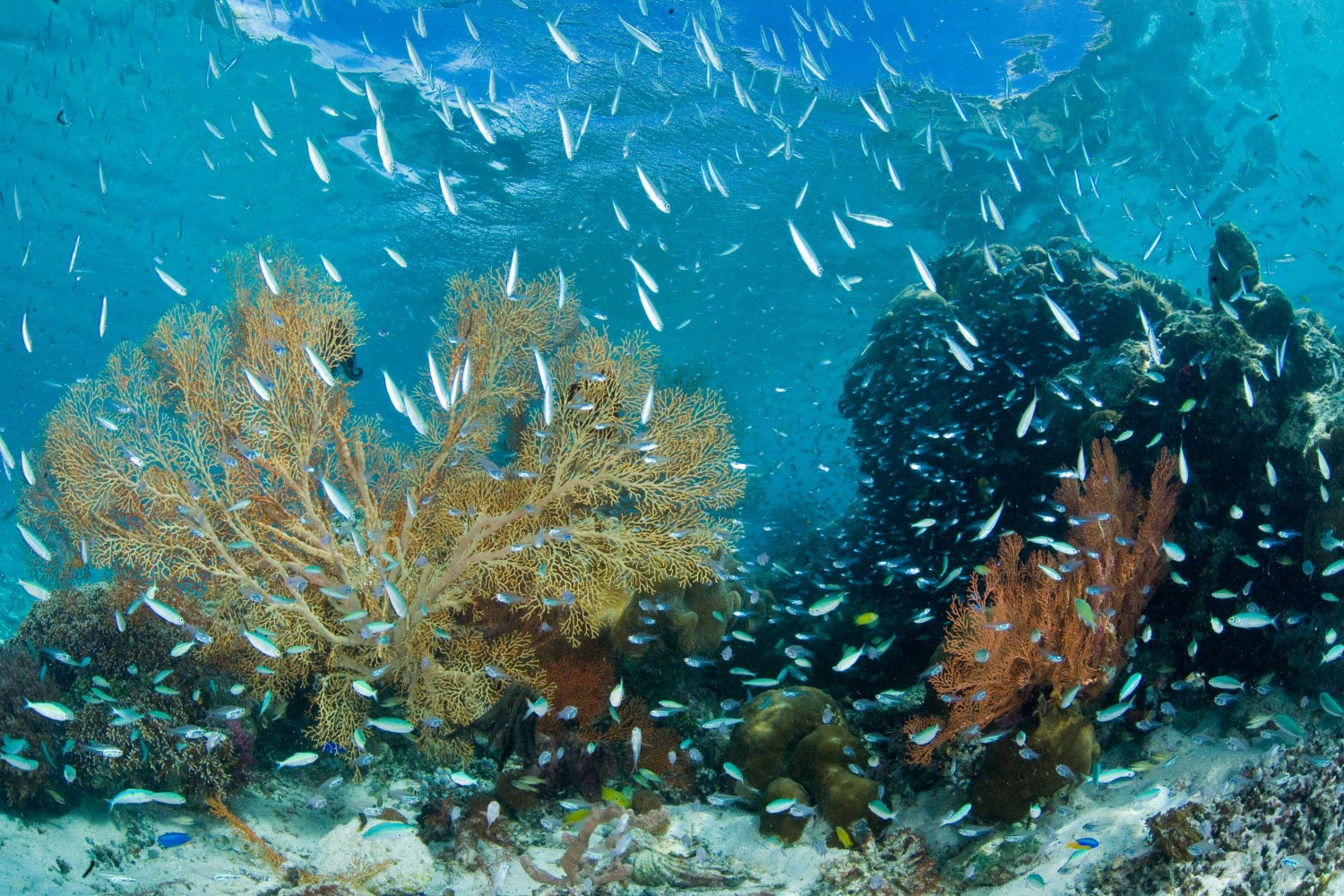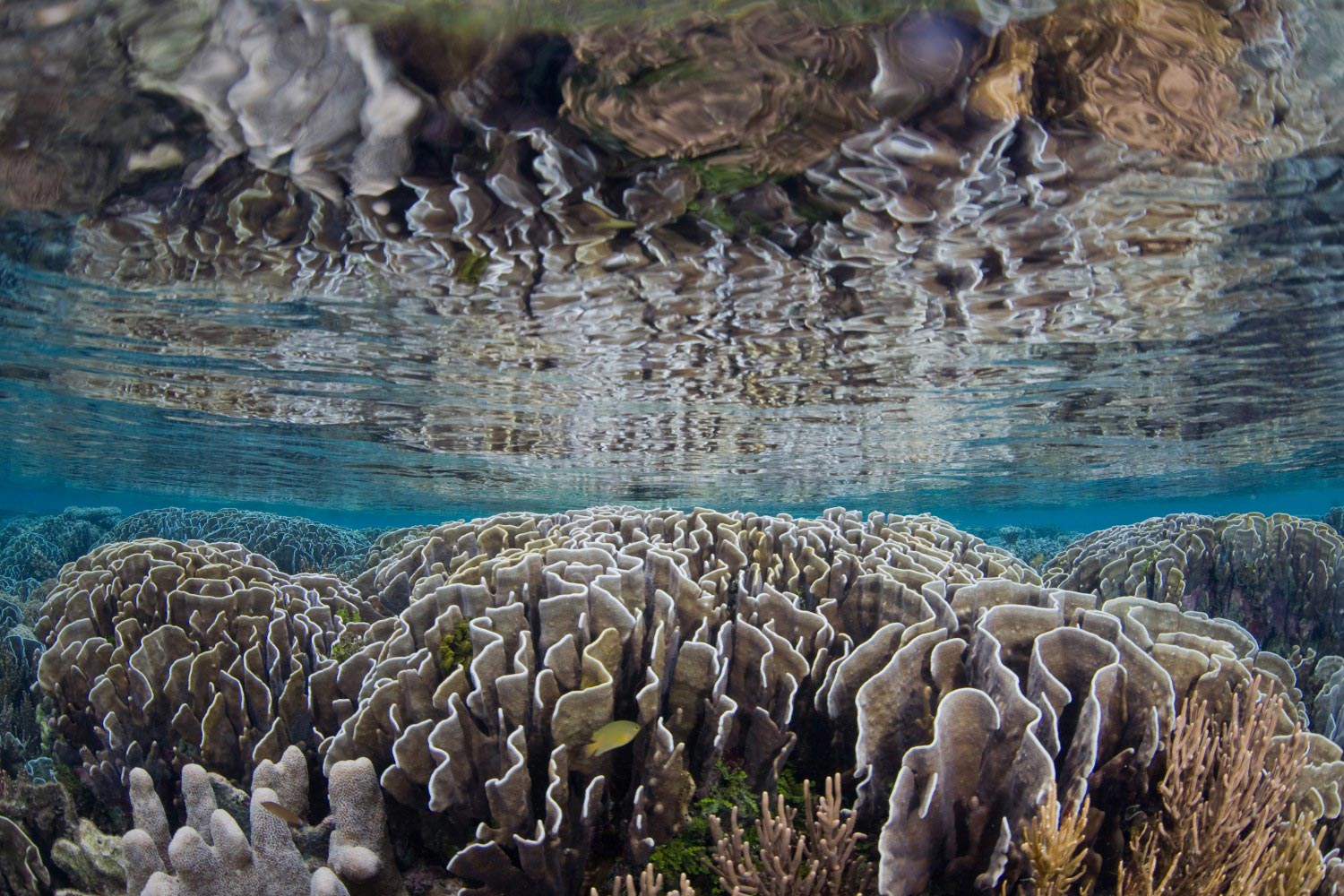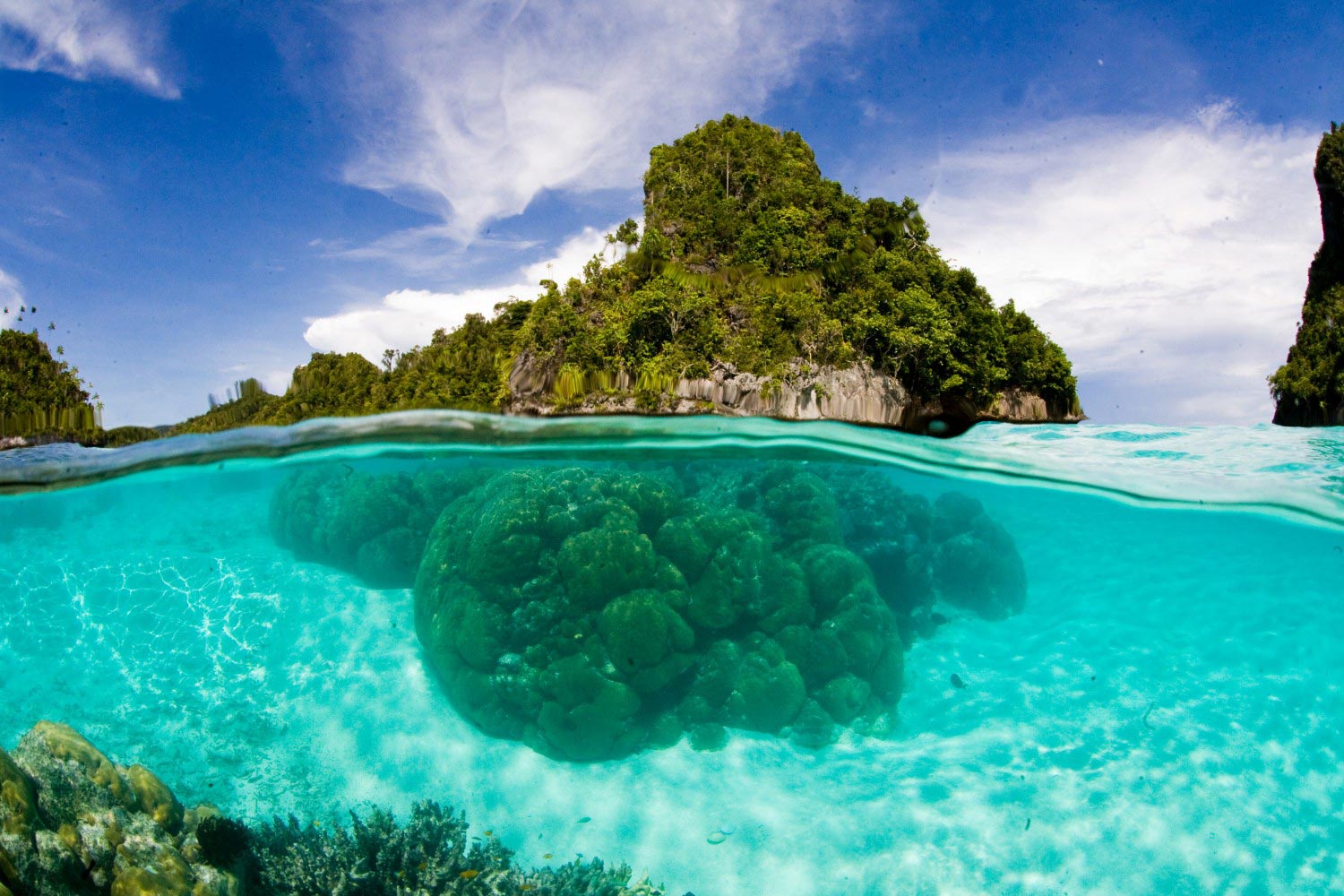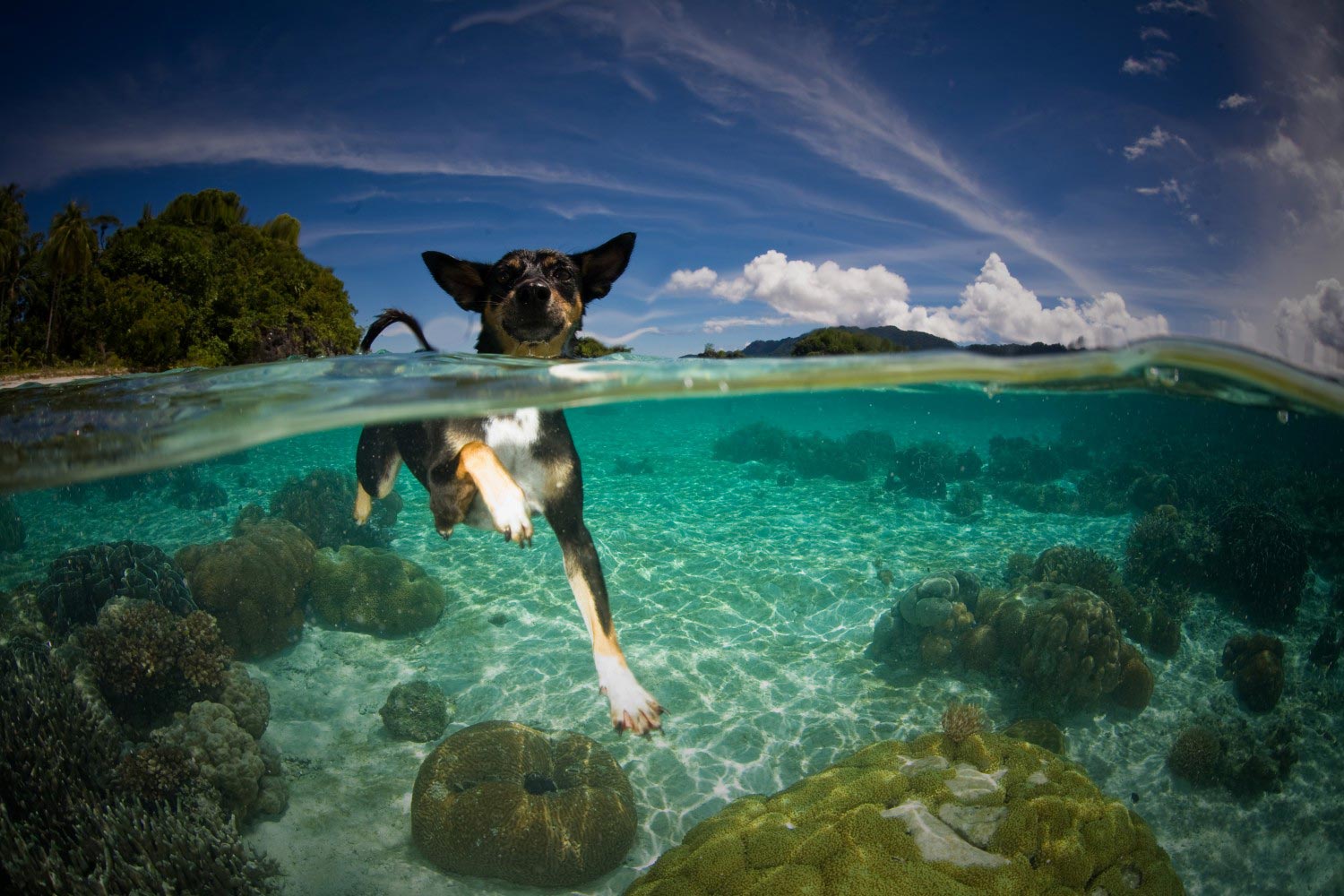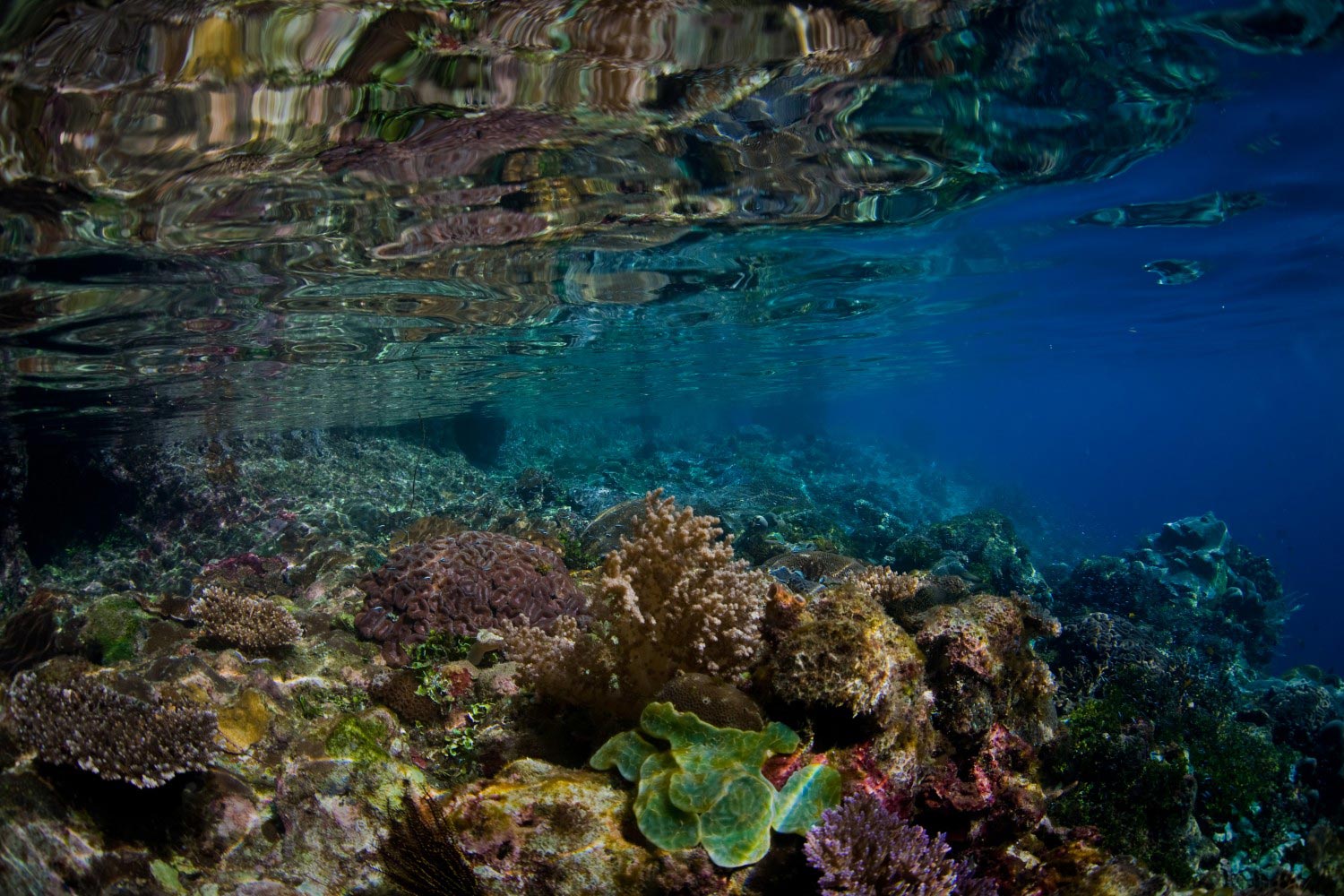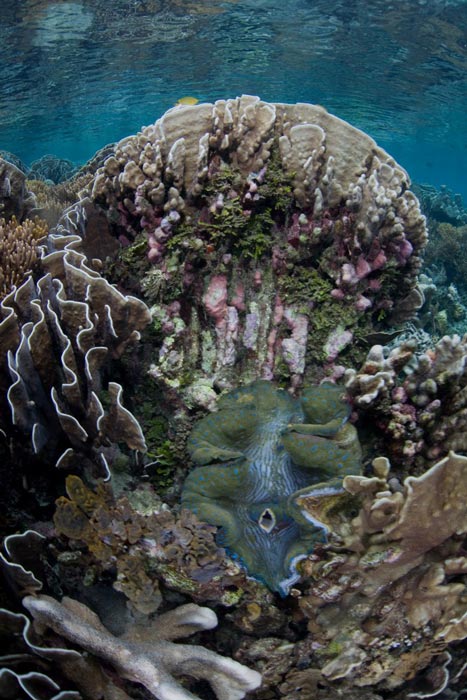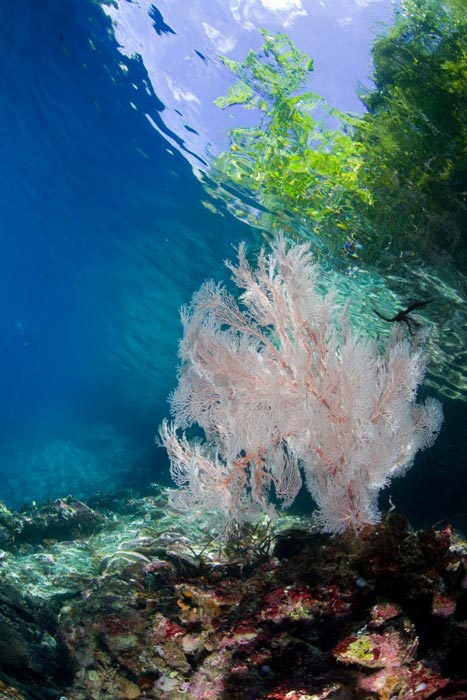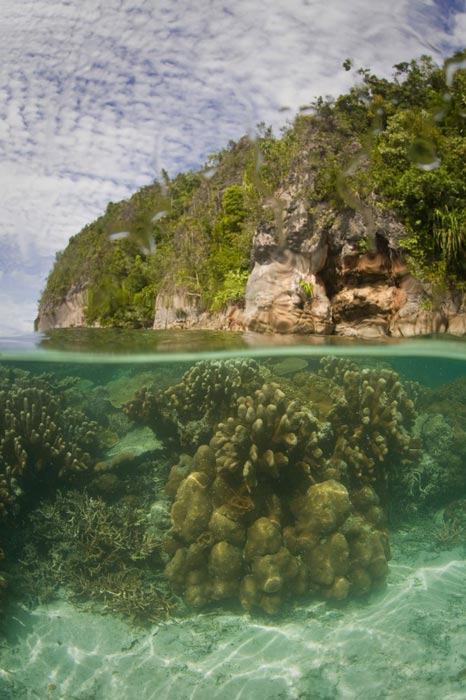Most people assume that to truly experience coral reef ecosystems and all they have to offer, you need to be able to scuba dive. Ironic then that the world’s bull’s eye of marine biodiversity, Raja Ampat, in the Coral Triangle – offers up its unparalleled riches to the humble snorkeler. Some of the best sites in this mini archipelago of the coast of West Papua, Indonesia, are actually best experienced without cumbersome tanks and BCDs. These are some of the most incredible shallow water reefs on the planet.
The closest airport and gateway to the Raja Ampat islands is Sorong. The town is developing rapidly, but still, most tourists won’t want to linger. Most foreigners are either miners or dive tourists passing through.
One of the best ways to explore this remote marine environment off West Papua’s Bird’s Head Peninsula is on board a traditional Phinisi Schooner. There are more than 700 islands to explore and a myriad reefs and coral cays. Even after years of exploring, new sites and even new endemic species are continually being discovered.
It’s possible to book a non-diving cruise through the archipelago – The Shakti is a long serving and extremely comfortable live aboard that offers such trips. Often you’ll end up witnessing more species – especially juvenile aquatic life forms – than on classic scuba dive safaris. You can find yourself watching an Epaulette shark on the hunt, ‘walking’ over the reef at night or tiny wobbeygong- or brownbanded bamboo sharks, still on the sandy bottom in the shallows in front of a beautiful beach. Or if you fell intrepid, you could even try some free diving with manta rays at night!
One of the best ways to explore this remote marine environment off West Papua’s Bird’s Head Peninsula is on board a traditional Phinisi Schooner. There are more than 700 islands to explore and a myriad reefs and coral cays. Even after years of exploring, new sites and even new endemic species are continually being discovered.
It’s possible to book a non-diving cruise through the archipelago – The Shakti is a long serving and extremely comfortable live aboard that offers such trips. Often you’ll end up witnessing more species – especially juvenile aquatic life forms – than on classic scuba dive safaris. You can find yourself watching an Epaulette shark on the hunt, ‘walking’ over the reef at night or tiny wobbeygong- or brownbanded bamboo sharks, still on the sandy bottom in the shallows in front of a beautiful beach. Or if you fell intrepid, you could even try some free diving with manta rays at night!
In most parts of the blue world, you need to dive deeper to find and observe rare aquatic animals. So how does the biodiversity in certain areas of Raja Ampat reach right up to surface? There are a number of reasons. Strong currents disperse lots of nutrients in these waters. There is the stability of the geographical latitude, water temperature and climate which have changed little over thousands of years. And of course, there’s that little phenomenon called evolution.
Raja Ampat offeres a whole diversity of shallow water experiences - barrier reefs, mangroves, walls, fringing reefs, shallow pinnacles, caves, lagoons, channels. Each has its unique inhabitants and qualities. Snorkelling and free diving without all the cumbersome equipment is an intensely ‘free’ experience.
With a water temperature hovering around 28-30C you don’t even need much gear to explore these shallow water ecosystems. Without all the heavy scuba gear, you can just lift up your head and you see the beautiful surroundings above sea level - or even both at the same time. With this split vision you can combine two amazingly colorful and untouched worlds in one gaze. Rainforests above, coral gardens below… Here is one of my favourites…
The Kabui Passage in Central Raja Ampat Waigeo and Gam islands is truly unique. This is a remote place full of miracles and even history – Darwin’s contemporary and author of The Malay Archipelago, Alfred Russell Wallace sailed through here in 1860. Of course he was more interested in insects and plants than in marine life. Cruising along the Passage, as it is known, you feel like you're on a river, skirting a maze of little rocks, islands, and patches of mangrove, with thick jungle alive with birdsong on the banks.
When the sun is shining, it lights up soft corals and rocks, large fans and oversized barrel sponges. Catch it on a day with good visibility – best on a flooding tide – and it truly looks like a living kaleidoscope. Every time your eyes move, you discover new shapes, patterns, markings, eyes – marine life at its richest. Soft corals, huge sponges and gorgonian fans grow up to the surface and even beyond on the low tide, as if trying to kiss the jungle fronds above. Fallen trees are immediately taken over and inhabited by sponges, worms, soft corals, shellfish and invertebrates. Life is fast in this channel – eat or be eaten.
Finding a quiet spot in one of the niches, you should definitely take some time to check out some of the well camouflaged critters. Juvenile cuttlefish or octopi, luminous nudibranches or squat little lobsters are common sightings in the channel. Out in the middle, you might chance upon the bizarre looking wobbeygong sharks or yellowtail barracudas or sea turtles.
Once, I even had an encounter with a massive adult female sandbar shark – she wasn’t at all shy and spent some time checking me out from just two meters away.
My biggest worry in the Passage isn’t sharks, though. Every time before I jump in to check the current I check the surface for reptilian eyes. Saltwater crocodiles are another of Raja Ampat’s many inhabitants. In all the years I’ve spent in the area I’ve seen one only once - fortunately from a boat!
One of the highlights in the Passage are the two little caves you can float through. Enter the first and you find yourself in a big pool filled with white sponges, schools of different species of cardinal fish and sweepers. Above your head you can see the jungle through a narrow little window. Little bats hang on the roof and you might spot a lizard crawling up the walls, while below you a big grouper may be carefully patrolling its territory.
The limestone edges are tremendously sharp and coated in mussels, scallops and fossil species like chitons. Outside the cave, the water is intense turquoise, like a swimming pool. If you are lucky, you might catch a school of barracudas at the exit or a reef shark cruising by. The walls outside the cave are covered in millions of bright orange, red and purple soft corals, waving gently in the surge and pull of the current. The usual reef fish dance around them and usually, sun beams light up the entire show.
And this is just one of the many magical shallow water experiences to be had in Raja Ampat.
www.shakti-raja-ampat.com/
Raja Ampat offeres a whole diversity of shallow water experiences - barrier reefs, mangroves, walls, fringing reefs, shallow pinnacles, caves, lagoons, channels. Each has its unique inhabitants and qualities. Snorkelling and free diving without all the cumbersome equipment is an intensely ‘free’ experience.
With a water temperature hovering around 28-30C you don’t even need much gear to explore these shallow water ecosystems. Without all the heavy scuba gear, you can just lift up your head and you see the beautiful surroundings above sea level - or even both at the same time. With this split vision you can combine two amazingly colorful and untouched worlds in one gaze. Rainforests above, coral gardens below… Here is one of my favourites…
The Kabui Passage in Central Raja Ampat Waigeo and Gam islands is truly unique. This is a remote place full of miracles and even history – Darwin’s contemporary and author of The Malay Archipelago, Alfred Russell Wallace sailed through here in 1860. Of course he was more interested in insects and plants than in marine life. Cruising along the Passage, as it is known, you feel like you're on a river, skirting a maze of little rocks, islands, and patches of mangrove, with thick jungle alive with birdsong on the banks.
When the sun is shining, it lights up soft corals and rocks, large fans and oversized barrel sponges. Catch it on a day with good visibility – best on a flooding tide – and it truly looks like a living kaleidoscope. Every time your eyes move, you discover new shapes, patterns, markings, eyes – marine life at its richest. Soft corals, huge sponges and gorgonian fans grow up to the surface and even beyond on the low tide, as if trying to kiss the jungle fronds above. Fallen trees are immediately taken over and inhabited by sponges, worms, soft corals, shellfish and invertebrates. Life is fast in this channel – eat or be eaten.
Finding a quiet spot in one of the niches, you should definitely take some time to check out some of the well camouflaged critters. Juvenile cuttlefish or octopi, luminous nudibranches or squat little lobsters are common sightings in the channel. Out in the middle, you might chance upon the bizarre looking wobbeygong sharks or yellowtail barracudas or sea turtles.
Once, I even had an encounter with a massive adult female sandbar shark – she wasn’t at all shy and spent some time checking me out from just two meters away.
My biggest worry in the Passage isn’t sharks, though. Every time before I jump in to check the current I check the surface for reptilian eyes. Saltwater crocodiles are another of Raja Ampat’s many inhabitants. In all the years I’ve spent in the area I’ve seen one only once - fortunately from a boat!
One of the highlights in the Passage are the two little caves you can float through. Enter the first and you find yourself in a big pool filled with white sponges, schools of different species of cardinal fish and sweepers. Above your head you can see the jungle through a narrow little window. Little bats hang on the roof and you might spot a lizard crawling up the walls, while below you a big grouper may be carefully patrolling its territory.
The limestone edges are tremendously sharp and coated in mussels, scallops and fossil species like chitons. Outside the cave, the water is intense turquoise, like a swimming pool. If you are lucky, you might catch a school of barracudas at the exit or a reef shark cruising by. The walls outside the cave are covered in millions of bright orange, red and purple soft corals, waving gently in the surge and pull of the current. The usual reef fish dance around them and usually, sun beams light up the entire show.
And this is just one of the many magical shallow water experiences to be had in Raja Ampat.
www.shakti-raja-ampat.com/
